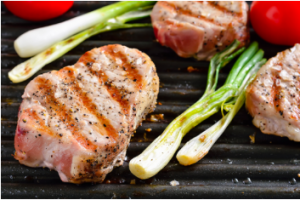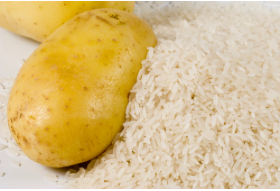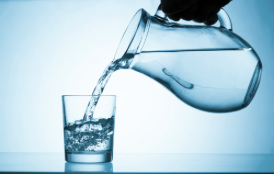[fusion_builder_container hundred_percent=”no” equal_height_columns=”no” menu_anchor=”” hide_on_mobile=”small-visibility,medium-visibility,large-visibility” class=”” id=”” background_color=”” background_image=”” background_position=”center center” background_repeat=”no-repeat” fade=”no” background_parallax=”none” parallax_speed=”0.3″ video_mp4=”” video_webm=”” video_ogv=”” video_url=”” video_aspect_ratio=”16:9″ video_loop=”yes” video_mute=”yes” overlay_color=”” video_preview_image=”” border_size=”” border_color=”” border_style=”solid” padding_top=”” padding_bottom=”” padding_left=”” padding_right=””][fusion_builder_row][fusion_builder_column type=”1_1″ layout=”1_1″ background_position=”left top” background_color=”” border_size=”” border_color=”” border_style=”solid” border_position=”all” spacing=”yes” background_image=”” background_repeat=”no-repeat” padding=”” margin_top=”0px” margin_bottom=”0px” class=”” id=”” animation_type=”” animation_speed=”0.3″ animation_direction=”left” hide_on_mobile=”small-visibility,medium-visibility,large-visibility” center_content=”no” last=”no” min_height=”” hover_type=”none” link=””][fusion_text]
You probably know you can’t pack on muscle if you’re not eating enough. Unfortunately, many bodybuilders have no idea just how many extra calories they really need to grow.
You might even know I recommend bodybuilders eat at least a thousand extra calories over maintenance — every day — when trying to gain mass? Sometimes even more…
However that’s a lot of food for most anyone. And for some it’s simply too much. Have you ever tried to meet those high-calorie guidelines, and just tapped out and stalled before the good stuff really started to happen?
If so I’ve got some tricks for you. Food choices, macronutrient strategies, and a select few supplements can easily transform you from a 2500-calorie a day eater into a 5000 calorie a day machine.
Let’s get started.
Step 1. Know your Macros
Macro is short for macronutrients — nutrients that provide calories or energy. There are 3 primary macronutrients you need to know about: protein, carbs, and fat.
First, it’s important to know each macro’s caloric density and how different macros can affect your appetite and digestion.
Fats
Fats are the most calorically dense macronutrient at 9 calories per gram. This makes eating more fat an effective way to increase energy intake.
But you can only increase your fats relative to energy expenditure. Meaning if you eat too much additional fat while on a hypercaloric diet you’ll put on too much bodyfat.
As a rule, eating higher fats early in the day for energy, and then switching to higher carbohydrates in the evening increases energy and satiety. This will be covered below in the Nutrient Timing section.
Top fats for increasing your calories:
Coconut oil
Real butter from grass fed cows
Cashews & almonds
Cashew or almond butter
Protein
Protein yields 4 calories per gram and is the most difficult macronutrient to digest. This is crucial because your digestive health will affect how much and how often you can consume high protein meals.
 So if you have trouble digesting large protein portions or you have a poor appetite for meat, you may have impaired digestion. To alleviate this, supplementing with betaine HCl and digestive enzymes can drastically improve your ability to consume larger portions of meat, and eat more frequent protein meals.
So if you have trouble digesting large protein portions or you have a poor appetite for meat, you may have impaired digestion. To alleviate this, supplementing with betaine HCl and digestive enzymes can drastically improve your ability to consume larger portions of meat, and eat more frequent protein meals.
Another option is to increase your protein intake in the form of very easy to digest proteins like pre-digested peptides. Or better still free form amino acids that require no digestion at all. This will increase the amount of amino acids you’re getting without further burdening the digestive system.
Other signs you might have impaired digestion are:
Heart burn
Bloating
Belching
Gas
Carbohydrates
Carbohydrates round out the macronutrients at 4 calories per gram. Of the three macros, carbohydrates are the easiest to digest but it varies largely on the source.
 Complex carbohydrates take longer to digest and tend to be less dense than refined carbohydrates. For example, cooked sweet potato and brown rice hold a lot of volume in fiber and water making it hard to get high amounts of carbohydrates from these sources.
Complex carbohydrates take longer to digest and tend to be less dense than refined carbohydrates. For example, cooked sweet potato and brown rice hold a lot of volume in fiber and water making it hard to get high amounts of carbohydrates from these sources.
Refined carbohydrates will be the densest, and often the highest glycemic as well. This makes them great for getting in a lot of carbs quickly. But should be reserved for when your body can use them; otherwise you’ll be hitting the fat storage switch.
Refined doesn’t mean junk though. You don’t have to pound simple sugars and junk food to get dense carbohydrates.
The most common refined starches in your diet come from flour. But wheat flour is NOT your only option. Try using rice, potato, and other flours to beef up the carb content of your dishes or meals. This is also what goes into most pancake and baking mixes, which opens up a wide variety of high carbohydrate options.
Other dense clean carb sources include maple syrups and honey. And of course if you’re focusing on putting on weight, the indulgence in some refined cheat food is acceptable. Cheat foods are usually a combination of starches and sugars.
Top carbs for increasing your calories
Note: The staple carb of your diet should be starch, but starchy foods can often be bulk and therefore very filling. Here are some options to add to your basics.
Gluten free starch flours (Rice, Potato, tapioca)
Dark Brown Grade A Maple Syrup
Glucose polymer carb powders
High glucose fruits (pineapple, apricots, dates, grapes) and of course their juices (no sugar added)
Some great recipes for growth here
Step 2: Nutrient timing
To get the most “calories for your macros” so to speak, you should respect the following macronutrient timing guidelines. These are essential to getting in all the calories and also getting the proper metabolic response you need from them.
- Consume higher amounts of fat early in the day, especially if you train later in the day. It may sound counter-intuitive, but a protein + fat breakfast is ideal for sustained energy.
- Consume most of your dense carbohydrates around your workout window, usually intra-workout, post- workout, and then your last meal or 2 of the day.
- Consume your protein evenly spread out throughout the day with the exception of your workout. You can use 20-25% of your daily protein around your workout in the form of easier to digest protein powders and amino acids.
Step 3: Sneaky Tips and Tricks
1. Time your water intake away from meals.
 Hydration is important, but your digestive system is quite burdened when you consume large amounts of water with meals. It takes a concentrated gastric mix of acids and enzymes to break down proteins and fats.
Hydration is important, but your digestive system is quite burdened when you consume large amounts of water with meals. It takes a concentrated gastric mix of acids and enzymes to break down proteins and fats.
Diluting your stomach contents with extra water drastically slows down digestion and can actually fatigue your digestive system over time. A better solution is to drink more water between meals, so you hydrate away from your solid foods.
2. Don’t have too much water with your post workout shake
As stated, water can slow down digestion. The benefit of a post workout shake is getting nutrients into your body as fast as possible. The last thing you want is to slow down that process.
Additionally your digestive system is the weakest during and after exercise because your body has been directing the blood flow to your muscles, not your stomach or intestines. This makes it even more crucial that you keep your post workout nutrition limited to the most easily digested sources, and do not over hydrate with them. However, drinking water before and during training will not interfere.
3. Use Liquid calories
Liquid based calories are a great solution because they’re very dense. However, you’re basically limited to things that are very easy to digest, namely carbohydrates and amino acids.
Protein powder like whey can be used to boost protein in a liquid form as well, but keep the actual water volume to a smaller quantity. Don’t put 20 grams of whey in 24 oz of water — 8 oz is plenty for a protein shake; 12 oz if you’re adding carbohydrate powder as well. You want it to feel a little thick.
If you’re using just carbohydrates and amino acids, the water volume doesn’t matter as much. This is what I recommend if you use it intra workout so you can both hydrate and get in some quality calories to boost recovery.
Step 4: Use Coconut or MCT Oil.
MCT’s are a great way to boost calories and energy without having to worry about negative effects on body composition. MCT’s are like free energy — they’re not used like other fatty acids, and are actually taken up by the liver and turned immediately into fuel.
Coconut oil is about 60% MCTs. Don’t use more than a tablespoon at once though, because it can be too much for your digestive tract to absorb, resulting in loose stools. With a meal you may be able to use 2-3 tbsp, but no more than 1 tbsp on its own.
Step 5: Avoid Appetite Suppressants
Chances are if you’re taking an energy or fat burning supplement it includes an appetite suppressant. Even caffeine and green tea are appetite suppressants. That doesn’t make them bad for you, just that they can interfere with your goal to get in more calories.
That said, some need caffeine to function, so timing is key. A cup of coffee won’t affect you too much, but most pre workouts and energy aids will. The key is to limit your caffeine supplements to only pre-workout, and make sure you bust your butt and burn through it in the gym.
Secondly, use some vitamin C an hour after your workout. Vitamin C helps your body eliminate caffeine and helps calm you down faster..
Foods that have a high acid content such as onions and tomatoes can also slow digestion and lead to food simply “sitting” in your stomach. Similarly, fiber can also slow down digestion, so eating high fiber foods at the end of a meal can help make digestion easier.
Finally, one of the biggest mental appetite suppressants is taste fatigue. Eating the same things over and over gets old fast. Vary the way you flavor your foods. Mix up your seasonings, spices, and cooking methods. Spices and herbs such cardamom, cinnamon, and fennel also help stimulate appetite.
Step 6: Supplements
There are number of effective supplements to help you tackle low appetite and provide convenient sources of calories.
Appetite aids
- Betaine HCl
- Probiotics – to improve enzyme production and reduce inflammation in the intestinal tract.
- Digestive enzymes to accelerate the breakdown of food.
- Zinc – improves appetite and digestion through multiple mechanisms including enzyme production.
Calorie dense supplements, weight gainers, and meal replacements
Supplemental calories can make life easier, but should not be the staple of your plan. These are best for people who have very physically active jobs. Try to limit yourself to 1 or 2 supplement based meals per day outside of the workout. They should also be consumed in an alternating fashion with whole food meals.
Adding extra amino acids to meals like glutamine, BCAAs or leucine is also a great way to increase protein content easily. Likewise carbohydrate powders can be used as an addition to a meal.
Step 7: Cycle Your Calories
Listen, if you take the “forever bulk” approach to getting huge you’ll actually turn your own body against you.
You see, linear bulking diets actually suppress the hormones that are responsible for muscle growth!…
So you can’t keep eating 5000 calories a day forever without hitting plateaus or even losing muscle. Not to mention you’re going to get fat in the process.
 The solution simple: periodically cycle back on your calories in order to reset your growth hormones and pave the way for another muscle surge.
The solution simple: periodically cycle back on your calories in order to reset your growth hormones and pave the way for another muscle surge.
The problem is… for some guys this could mean 4-5 weeks of consistently eating big and growing fast. And for other guys they need to take a break after only a week or two.
It all comes down to a lot of factors that I explain in my cyclical bulking two-phase System on the next page.
Yet what’s more exciting is that I’ve actually been able to boil all these factors down into a precise calculation that tells you exactly when to switch from my Reset Phase to my Growth phase. Which means you’re always growing optimally without putting on fat.
That laser focused calculation is part of the Incredible Bulk complete system. And I explain the whole thing right here at this link.
Find out Ben’s top tips to take your growth to a NEW LEVEL by going HERE
Get more top-level science and application with the Muscle Experts on the Muscle Expert Interviews podcast HERE
[/fusion_text][/fusion_builder_column][/fusion_builder_row][/fusion_builder_container]
